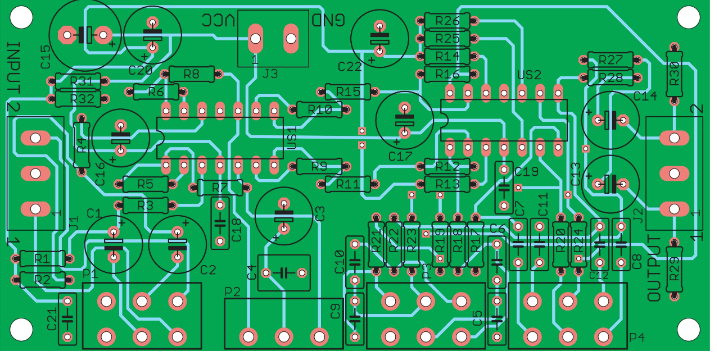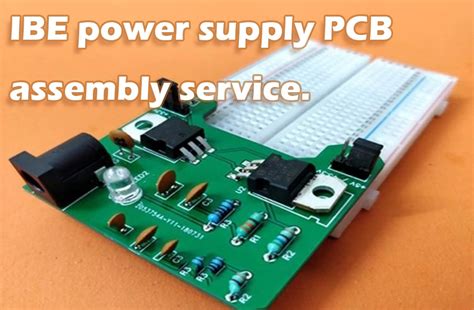Printed Circuits Assembly Corp: Streamlined PCB Manufacturing Expertise

Key Takeaways
Modern electronics manufacturing demands precision and scalability, particularly in PCB assembly and PCBA processes Leading providers leverage automated optical inspection (AOI) and surface-mount technology (SMT) to ensure consistent quality across prototypes and high-volume orders For industries like aerospace and automotive, where reliability is non-negotiable, advanced PCB assembly workflows integrate rigorous testing protocols, including thermal cycling and signal integrity analysis
A critical advantage of optimized PCBA solutions lies in their ability to balance speed and accuracy Below is a comparative overview of core service differentiators:
| Aspect | Rapid Prototyping | High-Volume Production |
|---|---|---|
| Lead Time | 3-7 days | 2-4 weeks |
| Testing Intensity | Functional validation | Full DFM/DFA compliance |
| Material Flexibility | Wide range of substrates | Bulk-optimized selections |
| Cost Efficiency | Moderate | High |
Cross-industry adaptability remains a hallmark of specialized PCB assembly services, with aerospace-grade designs requiring MIL-spec certifications and automotive applications demanding ISO/TS 16949 adherence By merging lean manufacturing principles with PCBA innovations, manufacturers reduce waste while maintaining zero-defect targets—critical for mission-critical systems
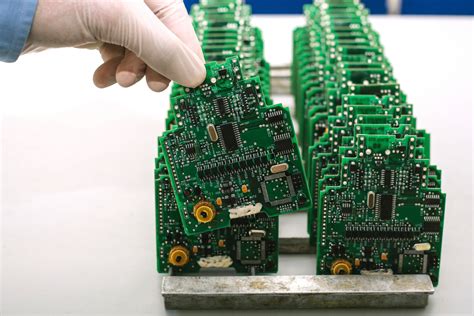
Precision PCB Assembly Techniques
Modern PCB assembly relies on a combination of cutting-edge technology and meticulous process controls to achieve the precision required for industries like aerospace and automotive electronics At the core of high-quality PCBA (Printed Circuit Board Assembly) is the integration of surface-mount technology (SMT) and automated optical inspection (AOI) systems, which ensure micron-level accuracy in component placement Advanced soldering techniques, such as reflow and selective soldering, are optimized to minimize thermal stress on sensitive components while maintaining robust electrical connections
Tip: For mission-critical applications, consider leveraging laser-cut stencils and nitrogen-reflow environments to reduce oxidation risks during soldering, enhancing long-term reliability
The use of PCB assembly protocols tailored to high-density interconnect (HDI) designs allows manufacturers to accommodate complex circuitry without compromising signal integrity Strict adherence to IPC-A-610 standards ensures that every PCBA undergoes rigorous testing, including in-circuit (ICT) and functional (FCT) validation, to detect latent defects Additionally, conformal coating processes protect assemblies from environmental factors like humidity and chemical exposure, a critical requirement for automotive and aerospace applications
By balancing automation with expert oversight, manufacturers achieve repeatable precision across both prototyping and production scales, laying the foundation for seamless transitions to high-volume manufacturing—a focus explored in subsequent sections
Streamlined PCB Manufacturing Processes
Modern PCB assembly relies on optimized workflows that balance precision with operational efficiency By integrating automated optical inspection (AOI) systems and intelligent process control software, manufacturers achieve PCBA output with defect rates below 01% This approach minimizes manual interventions while ensuring compliance with ISO 9001 and IPC-A-610 Class 3 standards, particularly critical for aerospace and automotive applications
A key innovation lies in modular production lines capable of switching between low-mix/high-volume and high-mix/low-volume orders within 4-hour changeover windows This agility supports just-in-time manufacturing models, reducing inventory costs by up to 30% for clients managing complex supply chains Real-time data analytics further enhance PCB assembly throughput, identifying bottlenecks in solder paste application or component placement phases before quality deviations occur
For mission-critical sectors, traceability protocols are embedded throughout the PCBA lifecycle Laser-etched serialization and blockchain-based documentation ensure full material genealogy – from bare-board sourcing to final testing These streamlined processes directly contribute to 15% faster time-to-market for IoT devices and industrial control systems compared to conventional methods, while maintaining 25μm placement accuracy across BGA and QFN packages
The convergence of adaptive thermal profiling and lead-free soldering techniques addresses evolving RoHS/REACH requirements without sacrificing production pace This technical synergy enables simultaneous management of 62-layer rigid-flex boards and high-frequency RF designs, positioning PCB assembly providers as strategic partners in next-generation electronics development
Rapid Prototyping for Electronics Innovation
In the fast-paced world of electronic product development, rapid prototyping has emerged as a critical enabler of innovation By integrating advanced PCB assembly techniques with agile manufacturing workflows, companies can transform conceptual designs into functional prototypes within days This approach allows engineers to validate circuit performance, thermal management, and component compatibility early in the design cycle, significantly reducing time-to-market for new technologies
Modern PCBA processes leverage automated optical inspection (AOI) and 3D printing technologies to accelerate prototype iterations while maintaining precision The ability to test multiple design variants under real-world conditions helps identify potential failures in high-density interconnect (HDI) layouts or mixed-signal configurations before mass production For startups and established enterprises alike, this agility fosters experimentation with emerging applications—from wearable IoT devices to AI-powered sensor arrays
By combining PCB assembly expertise with collaborative engineering support, manufacturers enable clients to refine designs based on prototype feedback without disrupting project timelines This iterative methodology not only optimizes product reliability but also creates opportunities for material innovation, such as testing lead-free solders or flexible substrates for next-generation electronics As industries push the boundaries of miniaturization and connectivity, streamlined prototyping remains foundational to translating visionary concepts into market-ready solutions
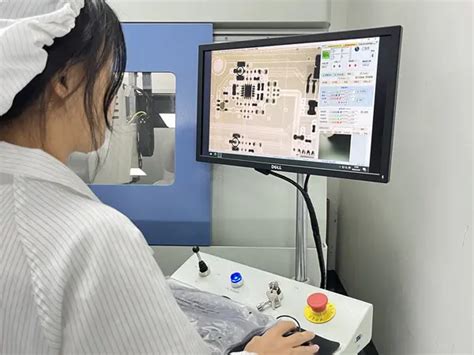
High-Volume PCB Production Expertise
Meeting the demands of large-scale electronics manufacturing requires a seamless integration of precision engineering and operational scalability PCB assembly specialists excel in managing high-volume production cycles while maintaining stringent quality benchmarks, particularly for industries like automotive and aerospace where component reliability is non-negotiable Advanced PCBA workflows leverage automated pick-and-place systems, precision soldering technologies, and AI-driven optical inspection tools to ensure consistent output across thousands of units
Optimized material procurement strategies and just-in-time inventory management further streamline production timelines, reducing lead times by up to 30% compared to conventional methods For automotive clients, this translates to accelerated time-to-market for advanced driver-assistance systems (ADAS), while aerospace manufacturers benefit from traceable, MIL-SPEC-compliant assemblies By combining flexible manufacturing cells with real-time process monitoring, high-volume PCB assembly achieves defect rates below 002%, even when scaling to million-unit orders
The integration of closed-loop feedback systems ensures continuous improvement, allowing rapid adjustments to design iterations or material specifications without disrupting production flow This approach not only meets but often exceeds the rigorous throughput requirements of global supply chains, positioning PCBA providers as critical partners in industrial-scale electronics innovation

Aerospace-Grade Circuit Board Solutions
The aerospace industry demands PCB assembly solutions that meet exceptional standards of reliability, durability, and performance under extreme conditions Printed Circuits Assembly Corp specializes in aerospace-grade PCBA designed to withstand high-altitude pressure fluctuations, thermal cycling, and intense vibration By leveraging advanced materials like polyimide substrates and high-temperature solder masks, these circuits ensure long-term stability in critical avionics, navigation, and communication systems
Rigorous testing protocols, including thermal shock simulations and MIL-STD-883 compliance checks, guarantee zero-defect performance for satellite components and flight control modules The integration of automated optical inspection (AOI) and X-ray verification in PCB assembly processes eliminates micro-cracks and solder joint anomalies, addressing aerospace-specific failure modes For mission-critical applications, PCBA solutions incorporate redundancy designs and EMI shielding, aligning with DO-254 and AS9100 certifications
This precision engineering extends to lightweight, high-density interconnects that optimize space and weight ratios—a vital consideration for next-generation spacecraft and UAVs By combining military-grade manufacturing practices with rapid prototyping capabilities, the company delivers traceable, lifecycle-managed circuit boards tailored for aerospace’s zero-tolerance operational requirements
Automotive Electronics Assembly Strategies
The automotive industry’s stringent reliability requirements demand specialized PCB assembly strategies that prioritize durability, precision, and compliance with rigorous safety standards Modern vehicles rely on PCBA solutions capable of withstanding extreme temperatures, vibrations, and prolonged operational cycles To meet these challenges, manufacturers employ automotive-grade materials such as high-Tg laminates and conformal coatings, ensuring long-term performance in harsh environments
A critical focus lies in integrating flex-rigid PCB designs to accommodate complex vehicle architectures while minimizing space and weight Advanced PCB assembly workflows incorporate automated optical inspection (AOI) and X-ray testing to detect micro-defects in solder joints or component alignment, which are vital for mission-critical systems like ADAS or battery management
Scalability remains equally important By aligning PCBA processes with lean manufacturing principles, suppliers achieve seamless transitions from prototype validation to high-volume production This approach balances the need for zero-defect tolerances in safety components with cost-efficiency targets, particularly for electric vehicle (EV) platforms
Collaboration with automotive OEMs during the design-for-manufacturability (DFM) phase further optimizes outcomes, reducing time-to-market for next-generation mobility solutions Such partnerships ensure compliance with IATF 16949 and AEC-Q100 standards, solidifying the role of PCB assembly as a cornerstone of automotive innovation
Advanced PCB Solutions for Aerospace
Aerospace applications demand PCB assembly processes that prioritize extreme reliability and long-term durability Printed Circuits Assembly Corp leverages PCBA technologies engineered to withstand harsh environmental conditions, including rapid temperature fluctuations, high-altitude pressure changes, and prolonged vibration exposure By utilizing aerospace-grade materials such as polyimide substrates and ceramic-filled laminates, their PCB manufacturing workflows ensure optimal signal integrity and thermal management—critical for avionics, satellite systems, and flight control modules
To meet stringent industry certifications like AS9100D, every PCB assembly undergoes multiphase validation, including thermal cycling tests and vibration resistance evaluations Advanced automated optical inspection (AOI) systems and X-ray analysis further guarantee defect-free interconnects, even in high-density designs For mission-critical applications, the integration of embedded trace impedance controls and conformal coating processes enhances performance stability across extended operational lifespans
By aligning PCBA strategies with aerospace innovation cycles, the company supports both prototyping for next-gen navigation systems and scalable production for defense communication hardware This balance of precision and adaptability positions their solutions at the forefront of aviation electronics modernization
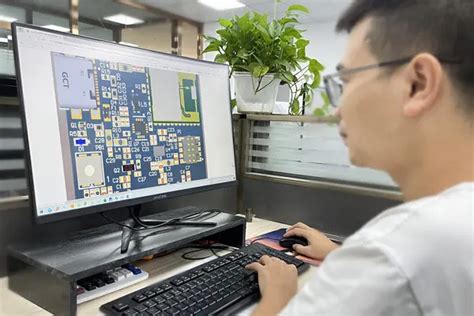
Cost-Effective PCB Manufacturing Methods
Achieving cost efficiency in PCB assembly requires a strategic balance between process optimization and material selection By implementing automated optical inspection (AOI) systems, manufacturers can reduce labor costs while maintaining rigorous quality control standards Advanced PCBA providers leverage panelization techniques to maximize substrate utilization, effectively lowering per-unit expenses without compromising circuit density or performance
The adoption of design for manufacturing (DFM) principles early in the development phase proves critical, eliminating costly redesigns through proactive component placement analysis High-volume production runs benefit from standardized surface-mount technology (SMT) processes, which minimize setup times and material waste Economical yet reliable solutions emerge through strategic partnerships with component suppliers, ensuring access to cost-optimized semiconductor packages and bulk-purchasing advantages
Modern PCB assembly workflows incorporate intelligent inventory management systems that dynamically adjust material orders based on real-time production data This demand-driven procurement model prevents overstocking while maintaining rapid turnaround capabilities For prototype phases, hybrid manufacturing approaches combine quick-turn PCBA services with partial automation to keep development costs predictable, creating a scalable pathway from concept validation to full-scale production

Conclusion
In the evolving landscape of electronics manufacturing, PCB assembly and PCBA services stand as critical pillars for industries demanding precision and scalability By integrating advanced fabrication techniques with rigorous quality control protocols, manufacturers ensure that both rapid prototyping and high-volume production cycles meet the exacting standards of sectors like aerospace and automotive engineering The strategic alignment of automated workflows with human expertise not only accelerates time-to-market but also maintains cost efficiency without compromising on reliability As emerging technologies continue to reshape design requirements, the ability to adapt PCB assembly processes to complex specifications—such as high-density interconnects or thermal management solutions—remains paramount For businesses prioritizing innovation and operational agility, partnering with specialists in PCBA ensures a seamless bridge between conceptual designs and market-ready products, solidifying their competitive edge in fast-paced industries
FAQs
What distinguishes your PCB assembly process from competitors?
Our PCBA approach integrates automated optical inspection (AOI) and X-ray testing, ensuring zero-defect outcomes for high-reliability industries like aerospace and automotive electronics This precision aligns with IPC-A-610 Class 3 standards for mission-critical applications
How do you ensure rapid turnaround for prototyping projects?
We employ modular production lines dedicated to PCB assembly prototypes, reducing lead times to 24–48 hours without compromising quality Real-time collaboration portals allow clients to monitor progress and approve revisions instantly
Can your high-volume PCB production scale with fluctuating demand?
Yes, our PCBA facilities utilize flexible manufacturing systems (FMS) capable of seamless transitions between 1,000 to 500,000+ unit batches Just-in-time inventory strategies and bonded supplier networks prevent material bottlenecks
What certifications support your aerospace-grade solutions?
We hold AS9100D, NADCAP, and ITAR compliance, with PCB assembly processes validated for extreme thermal cycling (-55°C to 125°C) and vibration resistance exceeding MIL-STD-883 standards
Do you offer design-for-manufacturability (DFM) analysis?
Our engineers provide complimentary DFM reviews during PCBA quoting, identifying potential issues like component spacing conflicts or impedance mismatches before production begins
Explore Customized Solutions for Your Project
For detailed technical specifications or to discuss your PCB assembly requirements, please click here to connect with our engineering team






